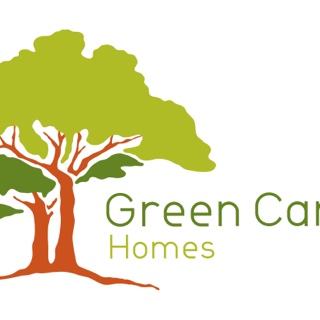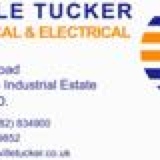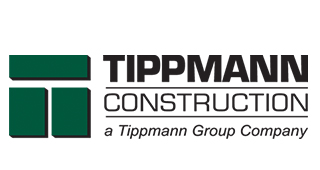Information
-
Client / Site
-
Conducted on
-
Prepared by
-
Location
-
Personnel
Weather
-
Could Wind impact the Safe use of equipment such as Ladders, Scaffolding, Aerial Lifts (MEWP's), Hoists/Cranes or Walking/Working Surfaces?<br><br>If wind is or could be > 25mph/40.2kph or at any speed that impacts the safe use of the above mentioned items, secure the site and discontinue using those items or performing those tasks until the wind is at a safe velocity, or effective controls are put in place to allow the work to continue if possible.
-
Are workers outside and could weather produce lightning within 5 miles/8 kilometers of the site?<br><br>If Yes, put plans in place to be aware of conditions, If there is lightning within 5 miles/8 kilometers, secure equipment and materials and take shelter, immediately. If there are elements including Rain, Hail, Snow or Ice, put controls in place to mitigate exposure, slips/falls and/or shock hazards.
-
Could workers be exposed to Heat or Cold illnesses like Heat Stress/Stroke, Frost Bite or Hypothermia?<br><br>If Yes, put plans in place to be aware of conditions. Refer to DP-06611, Heat Illness Prevention for procedures and tools to manage heat. For Cold related hazards, identify and implement controls as needed to be effective.
-
Has Rain, Snow, Hail, Fire, Wind, Temperatures, etc... caused any hazards for access, electrical, biological/chemical contamination or critter hazards?<br><br>If Yes, determine if or where safe access can be achieved, de-energize electrical sources, implement proper protection from contaminations and protect yourself from displaced critters such as rodents, snakes and predators. Do not enter the area if suitable controls can not be implemented and exercised.
General Site Conditions
-
Is the Construction site secure, including keeping all non-construction workers free from danger?
-
Are Entrances/Accesses to site defined and controlled?
-
Are there any open trenches?
-
Are Controls in place to protect workers in and around the trenches?
-
Are work surfaces, walkways and egress clear of any slip, trip and fall hazards?
-
Are any Hazardous Substances present on-site, or generated as a result of the tasks being performed?<br><br>Examples; exhaust from equipment, fumes, dust, chemicals, flammables (including fuels for equipment) and biological as well as chemical hazards.
-
Do all containers containing chemicals have a label showing container contents?
-
Are current SDS (Safety Data Sheets or MSDS) available to reference?
-
Are portable ladders being used?
-
Are ladders being inspected for missing, bent or broken parts?
-
Is the weight capacity correct?<br><br>- For the combined weight of the worker, tools and materials
-
Are fiberglass or non-conductive ladders being used when working near electricity?
-
Are the surfaces the ladders are sitting on level, secure and free from slipping?
-
Are ladders protected from struck by hazards?
-
Is the area below the ladder protected from falling objects?
-
Are all workers on ladders maintaining 3 points of contact and not reaching or working out of balance?
-
Are A-frame ladders being used correctly?<br><br>Answer No if:<br>- Anyone is standing on the top 2 steps<br>- A-frame ladder is leaning against anything and someone is climbing on the ladder<br>- Ladder is not tall enough for the task being completed
-
Are Extension ladders being used correctly?<br><br>Answer No if:<br>- The surface the ladder is leaning against is not secure<br>- The ladder is leaning too steep or too flat, ladder needs to be at a 4:1 angle<br>- If the ladder is accessing another level, and does not extending past that level at least 3ft (1m)<br>- The ladder is being used regularly to access a level or while workers are on that level and it is not tied off<br>- Ladder is not tall enough for the task being completed
-
Are there any Confined Spaces
-
Are Competent and Qualified personnel in place and do they have the equipment, processes and controls they need?
-
Is adequate lighting in place for all work areas?
-
Is general housekeeping on the site maintained (including areas in front and behind barricades)?
-
Are all fire extinguishers, electrical panels, fire risers/shutoffs, and other emergency equipment free from obstruction and clearly accessible?
-
Are there any Manual Handling (ergonomics) hazards
Site Safety Program
-
Is Site Safety Orientation in place?
-
Are PPE expectations for site clearly defined and communicated?
-
Are Emergency Response Plans in place?
-
Are toolbox talks being held?
Electrical
-
Have all Overhead or Underground Power Lines, Water Lines, Gas Lines, Sewer, Storage tanks, etc... where Aerial Lifts, Cranes, Structures or Excavation will take place been identified and controls put into place?
-
Are all electrical cords routed and secured to prevent trip hazards?
-
Do all cords have a properly grounded plug (all three prongs are present on plug)?
-
Is GFCI (ground fault) protection in place for all outlets?
-
Are cords, boxes, outlets, switches, light fixtures, electrical boxes, conduits and power tools free of damage and the potential to expose workers to shock hazards?
Work at Height
-
Are there elevated work surfaces?
-
Will Fixed Ladders be used to access elevated work surfaces?
-
Are rungs missing, inconsistently spaced or spaced too far apart to climb comfortable?
-
Are ladders free from any objects in back of the ladder rungs or grab bars that are closer than 7 inches?<br><br>- 7" is the distance from the ladder rung or grab rail to any surface including structure, conduits, etc...)
-
Are there any deficiencies with the Ladder Safety System?<br><br>- Is the ladder missing a Ladder Safety System?<br>- Has it failed inspection for any reason?<br>- For cable systems, are there any concerns with the cable, mounting hardware or cable glide?<br>- For SRL's, are there any concerns with the SRL itself, anchor points and make sure that only one hook can be connected to the Dorsal D Ring on the Worker's harness<br>- For Dual Leg Lanyard, have the ladder rungs been designed, built and approved as anchor points?
-
Is any ladder opening missing railings, toe kicks and a self-closing gate?
-
Is 100% Fall Protection provided for any portable or permanent ladder that is 24' or higher above any lower surface the individual could fall to?<br><br>** This includes ladders between levels and portable ladders on levels if the individual could fall from the ladder and then over the edge to a level below including the ground **
-
Are work surfaces, structure, ladders or any other access to surfaces free of corrosion, damage, neglect, quality of materials or poor construction?
-
Are railings, barriers, netting, etc... (Passive Fall Protection) compromised in any way?<br><br>- Does any guardrail, wall, cover or other barrier that would prevent the individual from falling to a level below have any corrosion, cuts, tears, damage, neglect or poor quality of workmanship or materials?
-
Are there any Unprotected edges?<br><br>- Edges that are not protected by Passive Fall Protection like guardrails, walls, covers or other barriers that would prevent the individual from falling to a level below. (6 foot for construction, 4 foot for general industry(includes customer sites not in active construction)(10foot when working on scaffolds)
-
Are workers trained in Fall Protection, to recognize hazards, and are they able to be 100% protected from Falls?<br><br>** Refer to Hierarchy of Fall Protection for order to select controls to implement **
-
Are Fall Arrest systems/equipment being used?<br><br>** Fall Arrest is when the worker can go over the edge and needs to be arrested before striking a level below **
-
Is the correct Fall Arrest equipment being used to avoid strike hazards and control arrest forces?<br><br>- Are strike hazards identified?<br>- Is the right Anchor point being used?<br>- Is the correct length and type of harness being used to prevent any Strike hazards, including Swing hazards?<br>- Is the harness designed with a shock pack and/or features to reduce arrest forces to tolerable levels?
-
Is there a Rescue Plan in place?<br><br>- Do all workers have Trauma straps on their harnesses?<br>- Has the Rescue Plan been defined?<br>- Are all responders aware of their responsibility and are they prepared?<br>- Is any equipment being used ready and available?<br>- Has the Rescue Plan been communicated to all workers?
-
Are there any holes in the work surface big enough to fit the toe of your shoe through?
-
Are there any Slip, Trip or Fall Hazards on the at height surfaces?<br><br>- Uneven surfaces?<br>- Debris, clutter, tools or materials?<br>- Anything on the work surface that make it slippery?
-
Are Guardrails and Barriers constructed correctly?<br><br>- Top rail is 42" (1.1m)high + or - 3" (8cm)<br>- Top rail support 200lbs (890 N) of force in downward or outward direction?<br>- Top rail has no sharp edges or parts that could impale a worker?<br>- Mid rails are half the distance between top rail and work surface {example top rails is 42" (1.1m), mid rail is 21" (53cm)}<br>- Mid rails supports 150lbs (68Kg) of force in downward or outward direction?<br>- If either top rail is a cable, cable cannot sag below 39" (1m) with up to 200lbs (890 N) of force.<br>- Edges below railings are protected with a minimum 3.5" (9cm) tall toe kick except in protected ladder or material handling openings
-
Will there be a need to transition from Aerial access equipment to any elevated work surface?
Powered Equipment (Fork Lifts, Cranes, MEWP's, Suspended Scaffolding, etc...)
-
Are any Fork Lifts, Cranes, MEWP's (Aerial Lift), Suspended Scaffolding (Swing Stage or Window Washing equipment) being used?
- Fork Lift(s)
- Crane(s)
- MEWPs (Aerial Lift)
- Suspended Scaffolding (Swing Stage, Window Washing)
- Other
- None being used
-
Do all operators have current operator certificate(s) for each type of equipment they will be operating?
-
Are Daily Inspections being completed for each piece of equipment before being used?
-
Is the equipment free of damage?<br><br>- Anything that does not function as intended by the manufacturer?<br>- Any damaged components? (bent, broken, leaking, any physical damage to mechanical, electrical or hydraulics. Including engines, tires, etc...)
-
Are the types, sizes and capacities of the equipment correct for the locations and tasks being performed?<br><br>- Is the equipment being used as intended by the manufacturer?<br>- Load lifting capacity<br>- Can surface being driven on support weight of equipment?<br>- Can equipment fit through any physical limitations like a door?<br>- Type of engine and emissions (example equipment being operated indoors)<br>- Does the equipment have the correct features and style for the work that needs to be completed (example all terrain vs hard surface only, counterbalance forklift vs telehandler, articulating boom vs straight boom)
-
Could operating equipment cause damage to or be damaged by the locations it will operate?<br><br>- Are there unstable, uneven or sloping surfaces that could cause equipment to fail<br>- Could the equipment cause property damage
-
Are operators of equipment and any passengers on MEWP's observing and using the correct processes and PPE <br><br>(example fall protection on MEWP's, seat belts on fork lifts)
Scaffolding
-
Are fixed or rolling scaffolds being used?
-
Were scaffold(s) designed, constructed and inspected by a competent, qualified individual?
-
Are inspection tags in place approving use of scaffold?
-
Is scaffold level and are the surfaces it is standing on stable?
-
Are guardrails in place for scaffolds 10' or higher?
-
Are ladders or another means provided to access scaffold if scaffold is not designed to be climbed?<br><br>** With few exceptions, most scaffolds are not meant to be climbed **
-
Are any parts of the scaffolding compromised (bent, damaged, broke or missing)<br><br>** sections, ladders, planks, braces, hardware, wheels, etc... **
-
Are the load limits of the scaffold adequate for the equipment and number of individuals on the scaffold?
-
Is a competent, qualified individual in place to do daily inspections and inspect any time the scaffold is modified or moved?
Additional Concerns or Conditions
-
Are there additional Concerns or Conditions that need to be captured and addressed?
Auditor Comments & Signature
-
COMMENTS:
-
Auditors Signature













